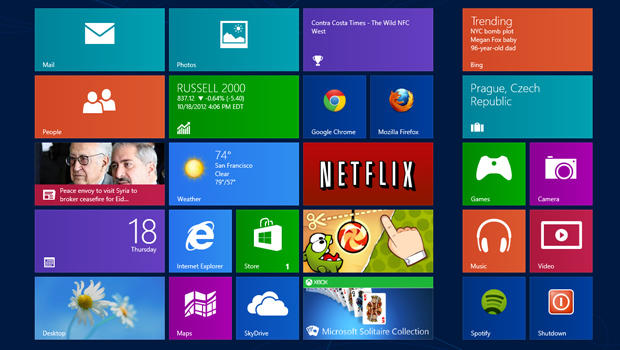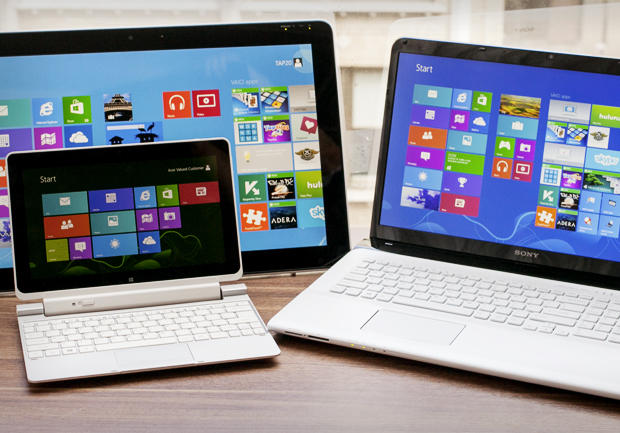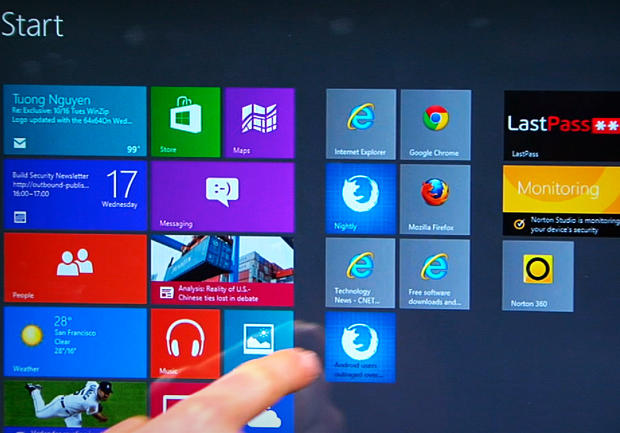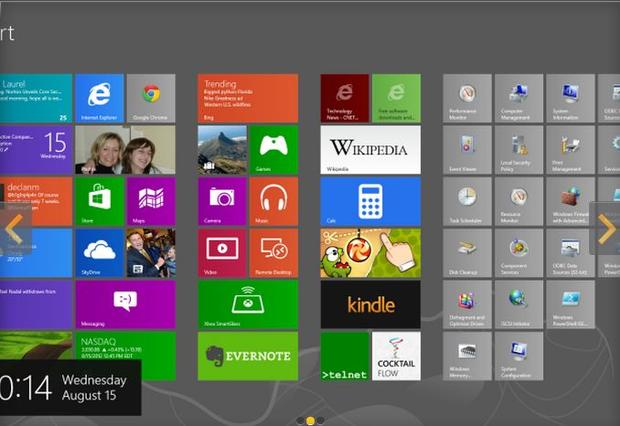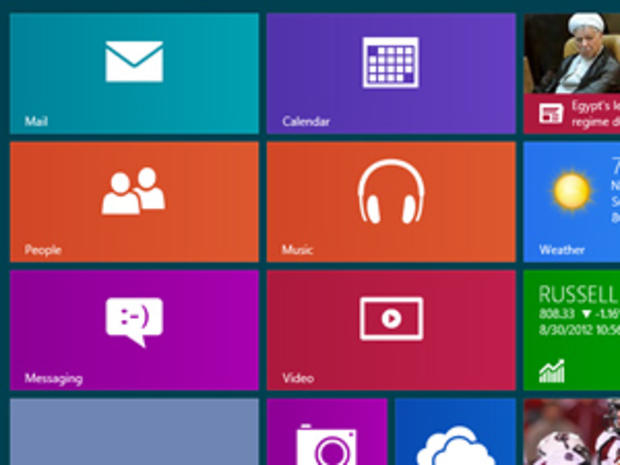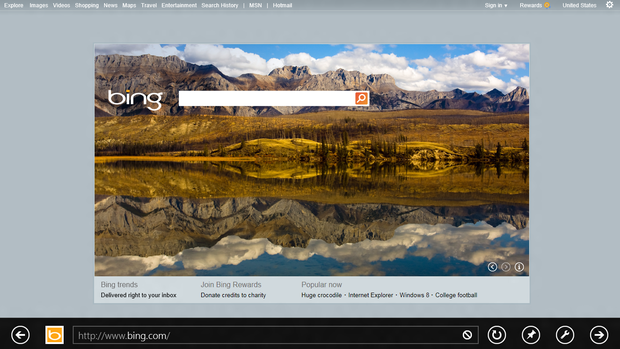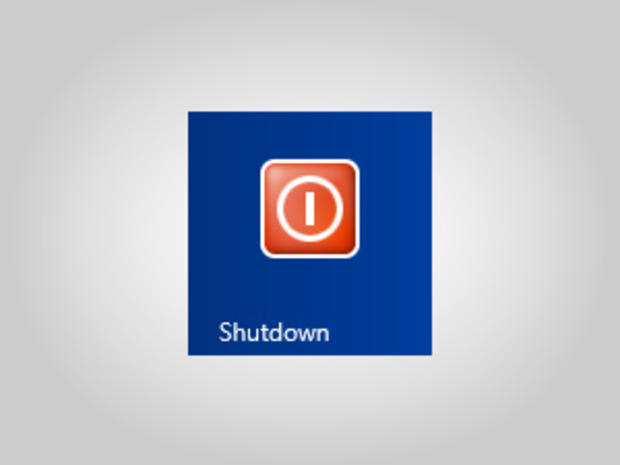A guide to Microsoft Windows 8
(CBS/AP) With the launch of Windows 8, buyers are discovering a computing experience unlike anything they've seen before. Here's a guide to getting past some of the operating system's hurdles.
The main thing to know is that Windows 8 is designed especially for touch-screen computers, to make desktops and laptops work more like tablets. It is Microsoft's (MSFT) way of addressing the popularity of tablets, namely the iPad. But Windows 8 will work with mouse and keyboard shortcuts, too. It'll take some getting used to, though.
There are two versions of Windows 8, or more precisely, there's Windows 8 and there's Windows RT. They look the same, but they run on different processing chips. Windows 8 runs on standard chips from Intel and AMD and is the version you'd get if you're upgrading your home desktop or notebook PC. Windows RT is the version for light, small tablets and laptop-tablet hybrids.
Windows 8 will run programs written for older versions of Windows. Windows RT won't. It's limited to applications specifically written for it and available through Microsoft's store. (As a consolation, a version of Microsoft Office is included free on Windows RT devices).
Here are some tips on how to navigate the new Windows.
A guide to Microsoft Windows 8
How to launch Windows 8
When you start a Windows 8 machine, you're greeted with a screen that shows the time and a pretty picture. To get past it with a touch-screen device, swipe upwards with your finger from the bottom edge of the screen. If you have a keyboard, hit any key.
A guide to Microsoft Windows 8
How to run Desktop and Metro programs in Windows 8
Next, you'll see a mosaic of Live Tiles, each representing an application. Programs specifically written for Windows 8 will run in this new environment, which is unofficially nicknamed Metro. Each application fills the screen when you run it. Applications written for older Windows versions will open up in something that looks very much like the old Windows Desktop environment. You can switch back and forth between Metro and the new Desktop, though Microsoft wants people to eventually use only Metro.
A guide to Microsoft Windows 8
How to start programs in Windows 8
The Desktop screen lacks a Start button, so it's hard to start programs from there. Microsoft's idea is that users should learn to go to the Metro tiles to start programs or access settings, even if many programs, including some Windows utilities, will open up in Desktop. To get back to the tiled Start screen with a mouse or touchpad, move the mouse cursor to the top right corner of the screen, then swipe it down to the "Start" icon that appears. If you have a touch screen, reveal the Start icon by swiping in from the right edge of the screen.
A guide to Microsoft Windows 8
How to view running programs in Windows 8
In the Desktop environment, you can glance at the Taskbar to see which Desktop programs are running. If you're a mouse or touchpad user in Metro and want to see what's running, you have to know this trick: Move the cursor into the top left corner of the screen, then drag it down along the left edge of the screen. If you have a touch screen, swipe in from the left edge, then quickly swipe back in.
A guide to Microsoft Windows 8
How to jump between open applications in Windows 8
Neither environment will show you programs that are running in the other environment, but if you have a touch screen, swiping in from the left side of the screen lets you jump between open applications. The "Alt-Tab" combination does the same thing with a keyboard, in case you aren't using a touch screen.
A guide to Microsoft Windows 8
How to use the Desktop version of Internet Explorer 10
There are two versions of Internet Explorer, one for each environment. A Web page you open in one doesn't appear in the other, so if you're trying to find your way back to a page, it helps to remember which browser you were using.
A guide to Microsoft Windows 8
How to close a program in Windows 8
When using Metro on a touch screen, you close a program by first swiping your finger down from the top edge of the screen. That shrinks the window. Then you swipe your finger down to the bottom edge of the screen. Don't stray to the right or left edges of the screen, or the app will end up "docked" in a column along that edge. You can perform the same action with a mouse cursor by clicking and dragging from the top edge of the screen, but using the old "Alt-F4" command is easier.
A guide to Microsoft Windows 8
How to use the Metro version of Internet Explorer 10
In the Desktop version of Internet Explorer, you can see at a glance which pages you have open in "tabs." In Metro, each Web page fills the screen, leaving no room for tabs.
A guide to Microsoft Windows 8
How to view other open pages in Windows 8
To see which other pages are open on a touch-screen computer, you swipe your finger down from the top of the screen to reveal thumbnails of the other windows. Don't sweep too far, or you'll shrink the window instead.
A guide to Microsoft Windows 8
How to reveal tabs in Windows 8
If you're using a mouse in Metro, you right-click anywhere on the screen to reveal the tabs. Of course, this means right-clicking no longer does any of things it can be used for in previous versions of Windows, such as letting you open a link in a new tab.
A guide to Microsoft Windows 8
How to shut down Windows 8
When Microsoft introduced Windows 95, some people thought it was amusing and counterintuitive that the procedure for shutting down the computer began with the "Start" button. In Windows 8, that incongruity is gone along with the Start button, but shutting down with a mouse or touchpad isn't obvious either. Move the cursor into the top right corner of the screen. A menu will pop out. Sweep down to the "Settings" button that appears, and click it. Then click "Power," then "Shut down." If you're on a touch screen, start by swiping in from the right edge of the screen, then tap "Settings."
